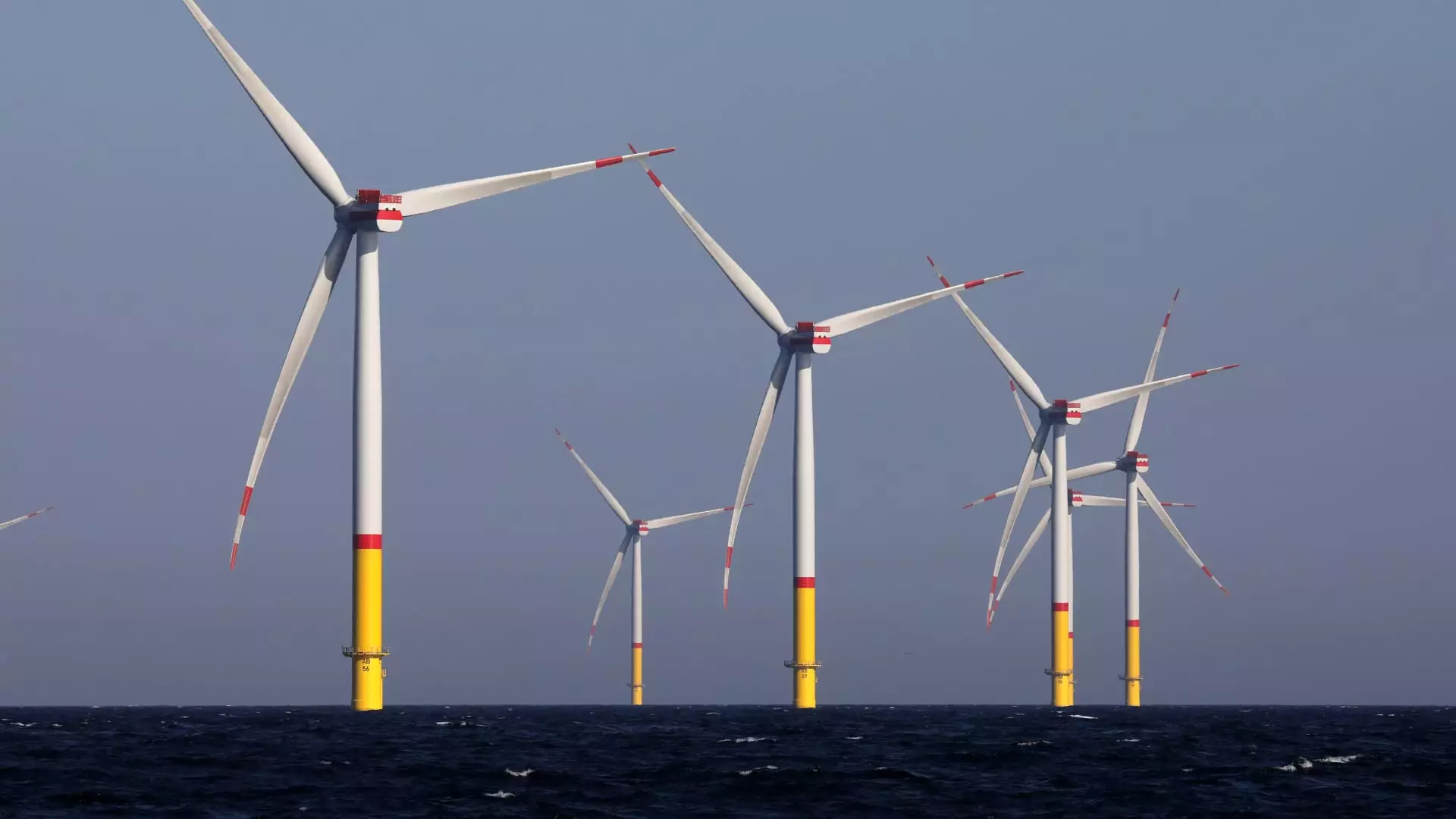In an era where the pursuit of clean and renewable energy is often touted as a hallmark of progress, the tumultuous relationship between political interests and sustainable initiatives leaves much to be desired. The recent events surrounding Equinor’s Empire Wind 1 offshore project serve as a stark reminder of the tangled web that energy policy weaves. While the project’s revival signals a positive trajectory towards renewable energy development, it also highlights the political machinations that can hinder or help those same efforts. This duality raises troubling questions: How may political interference with energy projects affect economic growth? And does our government truly prioritize the environment over partisan agendas?
Empire Wind 1 represents an initiative aimed at providing electricity to New York City, designed to generate 810 megawatts of energy, which is sufficient to power around half a million homes. However, this significant endeavor has been mired in a contentious political climate, showcasing how energy projects can become pawns in broader ideological battles. The Trump administration’s decision to halt construction, only to later lift that order, illustrates a recurring theme where clean energy initiatives are frequently entangled with partisan posturing and electoral considerations.
Economic Realities vs. Political Posturing
What makes the Empire Wind 1 situation even more perplexing is the bipartisanship that appears when it suits the narrative. New York Governor Kathy Hochul’s collaboration with former President Trump is a testament to how economic necessities may sometimes override ideological divides. Hochul’s insistence that the project would create 1,500 union jobs strengthens the argument for advancing the project, especially when set against the discomfort of potentially sacrificing progressive energy ideals for the sake of practicality. In a state that has often resisted natural gas initiatives, Hochul’s statements suggest a subtle acknowledgment of the need for a diversified energy portfolio—an acceptance that sometimes pragmatism must guide policy.
Yet, let’s not fool ourselves into thinking this is a clear-cut narrative of pro-environment versus anti-environment. President Trump, who has historically opposed wind energy—claiming it is not economically viable and detrimental to wildlife—nonetheless found a level of common ground here, raising eyebrows on both sides of the political spectrum. It serves as a reminder that, even within a center-right framework, the pursuit of energy independence must contend with the realities of economic and environmental trade-offs. It’s an uncomfortable truth that often makes people squirm at the intermingling of what should be rational energy policy with the chaos of political gamesmanship.
Navigating Policy Decisions in Uncertain Waters
The lifting of the stop-work order marked a critical juncture for Equinor, who has already invested $2.5 billion into the endeavor. However, the political maneuvering overshadowed the facts surrounding the project’s approval. Despite the Biden administration’s endorsement, Interior Secretary Doug Burgum’s assertions of rushed approval and inadequate analytical frameworks reveal a government struggling to find equilibrium between bureaucratic processes and the urgent need for progress. This speaks volumes to the inefficiency of our regulatory frameworks, which seem ill-equipped to handle the rapid evolution of renewable technologies.
As we look toward the future, three additional offshore wind projects are underway on the Eastern Seaboard, illustrating a burgeoning industry rife with enthusiasm tinged with uncertainty. The challenges these projects face, from funding to regulatory approvals, paint a grim picture of the uphill battle renewable energy must bravely confront in a politically complex landscape. Industry leaders like Equinor and Dominion Energy are begrudgingly forced to navigate through a labyrinth of approvals, with deadlines dictated less by technological readiness and more by the whims of whoever sits in the Oval Office.
Conversely, the glaring inconsistency in energy policies—shifted by the political winds—raises pivotal concerns for investors and stakeholders alike. A mere change in administration can unravel years of planning and investment, which makes the domain of offshore wind energy look like a high-stakes gamble where the house often wins, leaving innovators and workers stranded in uncertainty.
The Future of Energy: Hope or Mirage?
The significant hurdles that accompany the advancement of offshore wind projects highlight a troubling paradox in energy policy: one that necessitates immediate action but is often bogged down by an inability to unify on common ground. The loud voices of political leadership have a way of shaping public perception around renewable energy and its potential benefits or drawbacks, leading many to question whether the path to sustainable solutions is genuinely paved with intention or fraught with opportunism.
However, one must remain hopeful that despite the chaos, the necessary momentum for renewable energy continues to build. In an age where climate change is indisputably a pressing issue, the offsetting benefits offered by offshore wind energy could eventually help usher in an era of energy independence while simultaneously addressing environmental concerns. This delicate balance hangs in the balance, precarious yet resolute, waiting for leaders to recognize that the future of energy lies not solely in political alliances or opposition, but rather in the collective commitment to a sustainable tomorrow.

